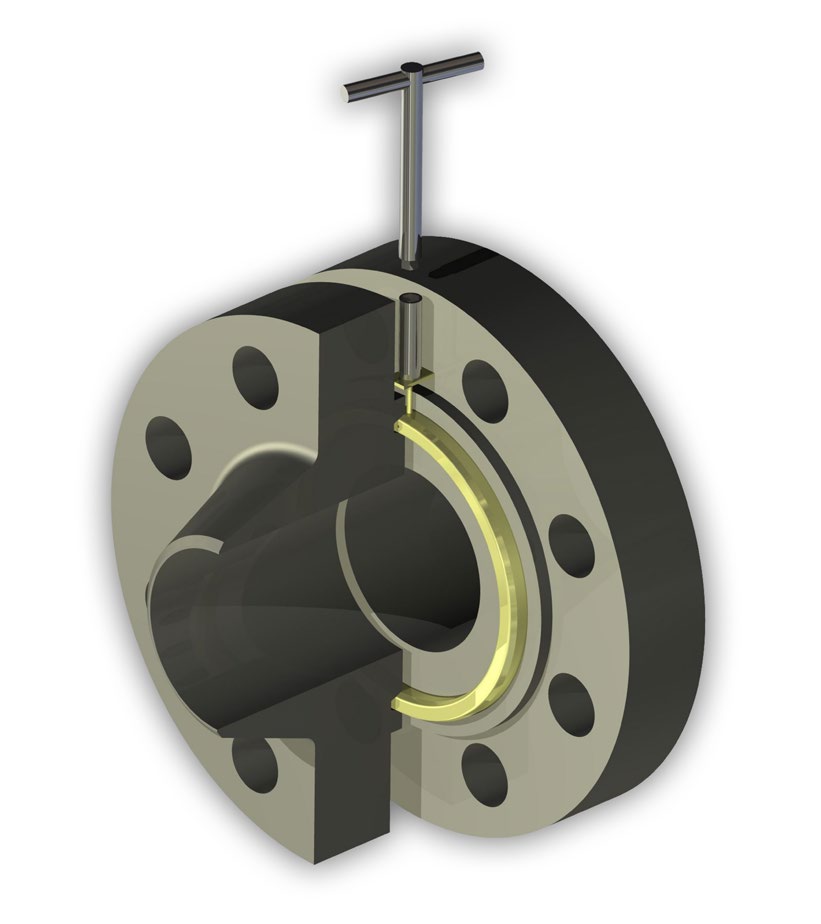Leakages and ill-assembled flanged connections are a daily concern for both offshore and onshore refining industries. Possible implications include additional reinstatement, production loss, monetary loss, damage to assets, harm to employees and environmental consequences. Operators and engineering houses have been left with limited options for ensuring the integrity and safety of bolted flange connections -- until now.
KLINGER Sentry Reverse Integrity Gaskets are designed so leakage testing can be carried out on individual gasketed connections to determine if tightness has been achieved, before introducing internal pressure. And the system also allows monitoring of the joint throughout its lifespan.
The Sentry Reverse Integrity Gasket System:
- Minimizes plant downtime
- Reduces emissios
- Increases efficiency
- Reduces operational costs
KLINGER understands the importance of adapting to current market conditions and, at the same time, continuing to develop safe, innovative and commercially beneficial sealing solutions. With its latest solution, KLINGER not only listened to the customers but has also delivered a unique service offering.
Applications
The Sentry gasket is a gasket that can be directly tested to determine whether it has seated properly on the flange faces, without the need to introduce an internal test media into the piping system or pressure vessel.
It reduces or eliminates the need for pre-startup service tests using nitrogen or other testing media.
Some typical application areas include:
- Large diameter/volume piping service testing
- Spade or blank removal from flanged joints
- Mechanical equipment, e.g. PSV, removal and return
- Lethal, toxic, or other severe service presssurized systems
- Subsea piping modifications and tie-ins
Dimensions
Sentry RTJ gaskets are standard ASME B16.20 gaskets, and fit ASME B16.5 and ASME B16.47 flanges with RTJ facings.
The Sentry DS is an IBC dual-seal Maxiprofile gasket designed to fit standard raised face flanges.
The Sentry DS is thicker than traditional gaskets to allow for the testing annulus in the body of the gasket, and the test tube and port.
Test ports are typically sized to prevent protrusion of the port beyond the outer circumferential edge of the flange.
Anti-rotation plates, fitted to the test port, are sized in accordance with the raised face heights specified within the flange dimensional standards.
Properties
A complete Sentry gasket testing system consists of:
- A Sentry RTJ or DS gasket
- A blind plug fitted to the test port
- A test port adapter fitting
- A hand operated hydraulic pump
The test port contains an elastomeric o-ring which is sealed by screwing on the blind plug, forming a fire-safe connection.
No tools are required other than a hex head key, to remove and return the blind plug.
An aluminum gasket insertion tool (GIT) is available to facilitate easy gasket installation, particularly in subsea conditions.
Materials
Sentry RTJ: Available in all commonly used metals for RTJ gaskets.
Sentry DS: SS 316L for the Maxiprofile core, with flexible graphite as standard facing material.
Other core and facing materials, to suit specific application parameters, can be provided on request.
The hydraulic oil pump can be substituted with a nitrogen pressurizing system, where specific testing conditions dictate.
The original article can be found on KLINGER'S website here.
For more information about this gasketing tool, or if you have seal engineering needs, contact Gallagher Fluid Seals today.






